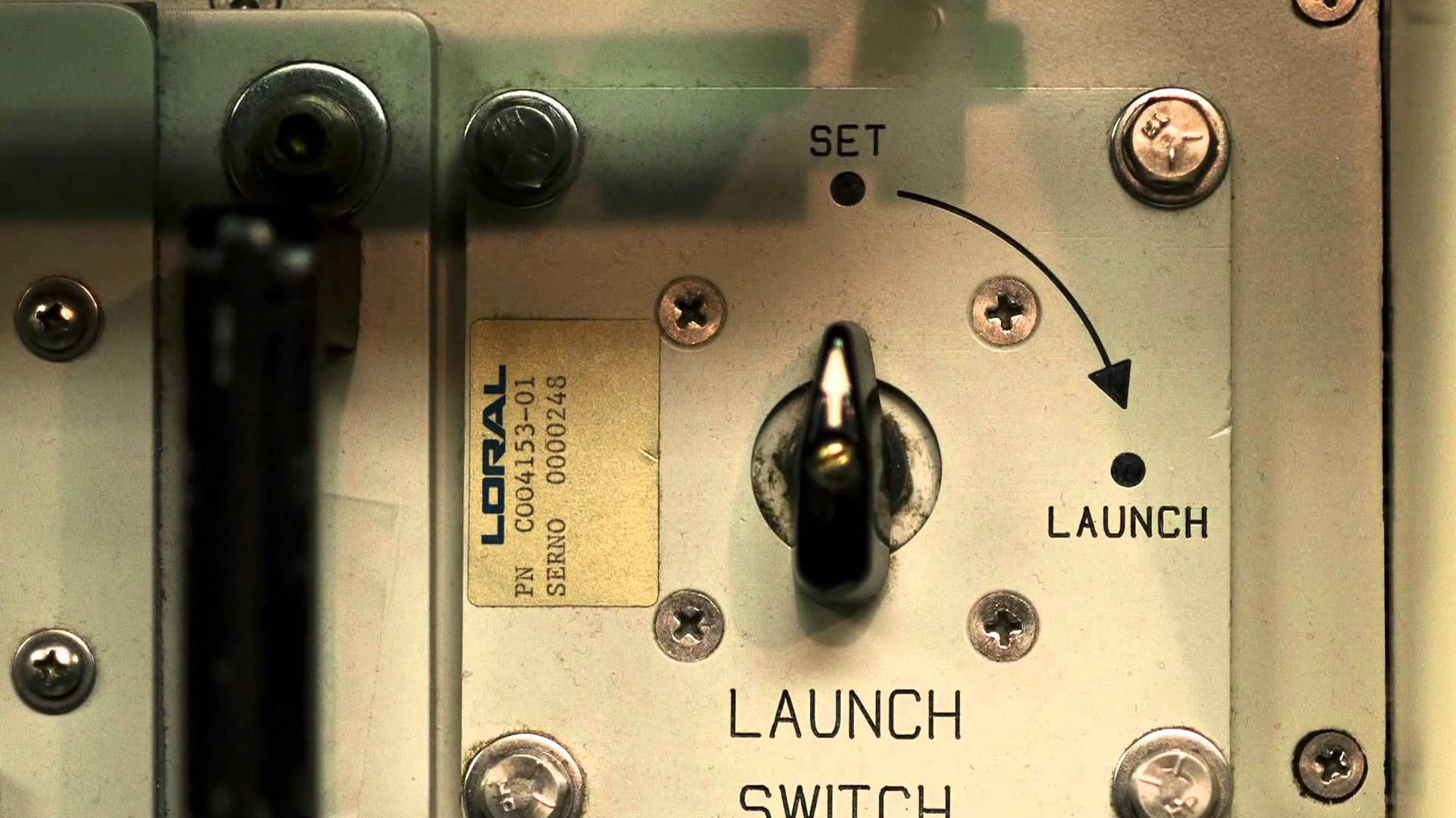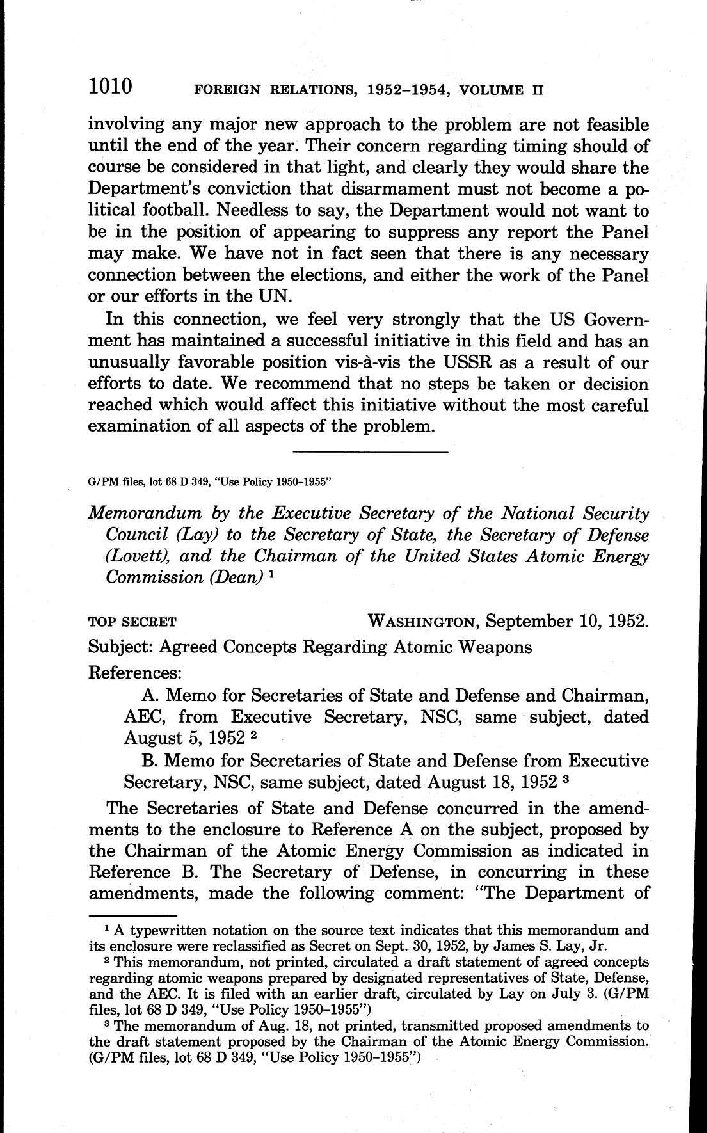Date
September 10, 1952
Document
- View PDF (1 MB)
Description
This document attempts to come to a more permanent resolution concerning the nuclear weapons “custody dispute” between the US Atomic Energy Commission and the US Department of Defense. For context on how physical possession of nuclear weapons became split between these two organizations, see Office of the Assistant to the Secretary of Defense (Atomic Energy), “History of the Custody and Deployment of Nuclear Weapons, July 1945 through September 1977,” (February 1978), 21.
The document’s main recommendations designate the terms under which the DOD and AEC would interact over custody and the necessary requirements and responsibilities taken upon by the DOD once it does take custody. It also clarifies the relationship between the AEC, the DOD, and the President with regards to the production of weapons: the DOD would set requirements, the AEC would set schedules and goals, and the President would then navigate between these two constraints to determine the actual production program.
Commentary
Citation
Memorandum by the Executive Secretary of the National Security Council (James S. Lay, Jr.) to the Secretary of State, the Secretary of Defense, and the Chairman of the United States Atomic Energy Commission, “Agreed Concepts Regarding Atomic Weapons,” (10 September 1952), Foreign Relations of the United States, 1952-1954, National security affairs, Volume II (Washington, DC: US Government Printing Office, 1984), 1010-1013.
Provenance
PDF is from the Digital Collections of the Foreign Relations of the United States at the University of Wisconsin (direct link to start page). It is also available on the website of the Office of the Historian, US State Department.
Topics
Referenced in
Document entry started by Alex Wellerstein on June 2, 2018. Entry last updated by Mikael Kelly on October 15, 2018.


Towards the question of nuclear launch procedure, the document gives the following directive:
Note that this is not a two-man rule situation: the President retains total control over the authority to give authorization, and the conditions under which the weapons can be used.
It also makes explicit that possession of a weapon by the DOD is not, by itself, a granting of authority for use.
An earlier version of this directive was more vague:
The Atomic Energy Commission (AEC) strongly objected to this language. They also objected to earlier comments from the Joint Chiefs of Staff that they saw as giving too much latitude to the military to make use decisions:
The AEC objected that this language was much too confusing, lacking needed clarity regarding the “how, when, and where” of nuclear weapon use. This gives some additional context to the particular formulation in the “Agreed Concepts” directive.1
Notes